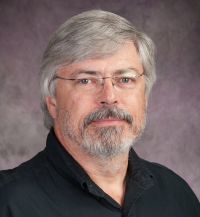Brett DePaola
If you can read this, your browser is unable to properly import or use
Cascading Style Sheets (CSS). Please upgrade to a more modern browser.

Brett DePaola
Professor & Department HeadPh.D. Physics, 1984, University of Texas-Dallas
Contact Information:
- Phone: 785-532-1623
- e-mail: depaola@phys.ksu.edu
- Web: http://www.phys.ksu.edu/personal/depaola
Research Interests:
Charge transfer collisions between slow, highly charged ions and Rydberg atoms; Use of a mageto optic trap (MOT) in ion-atom collisions; Binary encounter electron (BEe) production in fast ion-atom and ion-molecule/cluster collisions.
Please visit the Physics Department for teaching and class information.
My research is focused on the study of coherent control of a particular type of cold collision known as photo-association (PA). In this process, a laser is used to place pairs of neighboring cold atoms having temperatures of ~120 microkelvin, into an electronically excited, bound, molecular state. If allowed to decay, these molecules, having typical internuclear separations of ~50 nanometers, would normally decay back into separate ground state atoms, though they can occasionally decay to bound electronic ground states of the molecule. In our case, some fraction of the excited molecules are further excited into autoionizing molecular states. The resulting molecular ions are readily extracted and used as a measure of how efficiently PA + excitation (PAE) takes place.
We first use cw lasers to cool and trap Rb atoms in a magneto-optical trap (MOT). Then using the JRML's broad bandwidth, ultra-short pulsed laser we photo-associate and then coherently excite the cold molecules to the doubly excited Rb(5p,5p) manifold of molecular states. These states are then probed with a narrow linewidth cw laser which selectively excites to autoionizing molecular states. We measure the number of molecular ions produced as a function of the "shaping" we apply to the ultrafast laser pulse. The ultimate goal is to efficiently create molecules in a specific desired state. The underlying idea is that the better we understand the limitations of controlling this very simple chemical process, the better chance we will have in controlling more complicated systems.
In order to explore coherent excitation by the ultra-short pulse laser, we modify the spectral phase and amplitude of the pulses. That is, we control f(w) and E(w) using acousto-optical devices. Thus far, the emphasis has been on controlling PAE through shaping the pulse in the spectral phase. We have seen dramatic effects with contrast ratios (between the "best" and "worst" phases) of nearly 200 to 1. To date, we have generated "landscapes" in which we scanned phase patterns over a few parameters. In the coming year we will apply learning algorithms which should create optimal phases for exciting to specified molecular states. The challenge will then be to understand why certain phases, as determined by the learning algorithm, work better than others.
This research lies in the cross-over region between the physics of ultrafast, ultra narrow line width, and ultra cold.
Recent Publications:
See also Brett DePaola's profile on
Google Scholar.
Access to journal links may be restricted to subscribers.
The
KSU Math/Physics Library
offers an extensive collection of journal links.
Last updated on Tuesday, 07-Sep-2021

